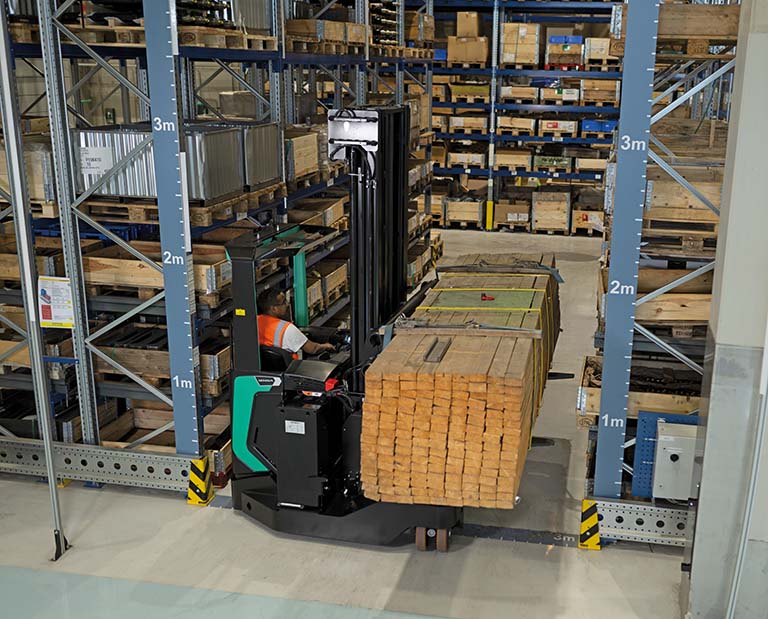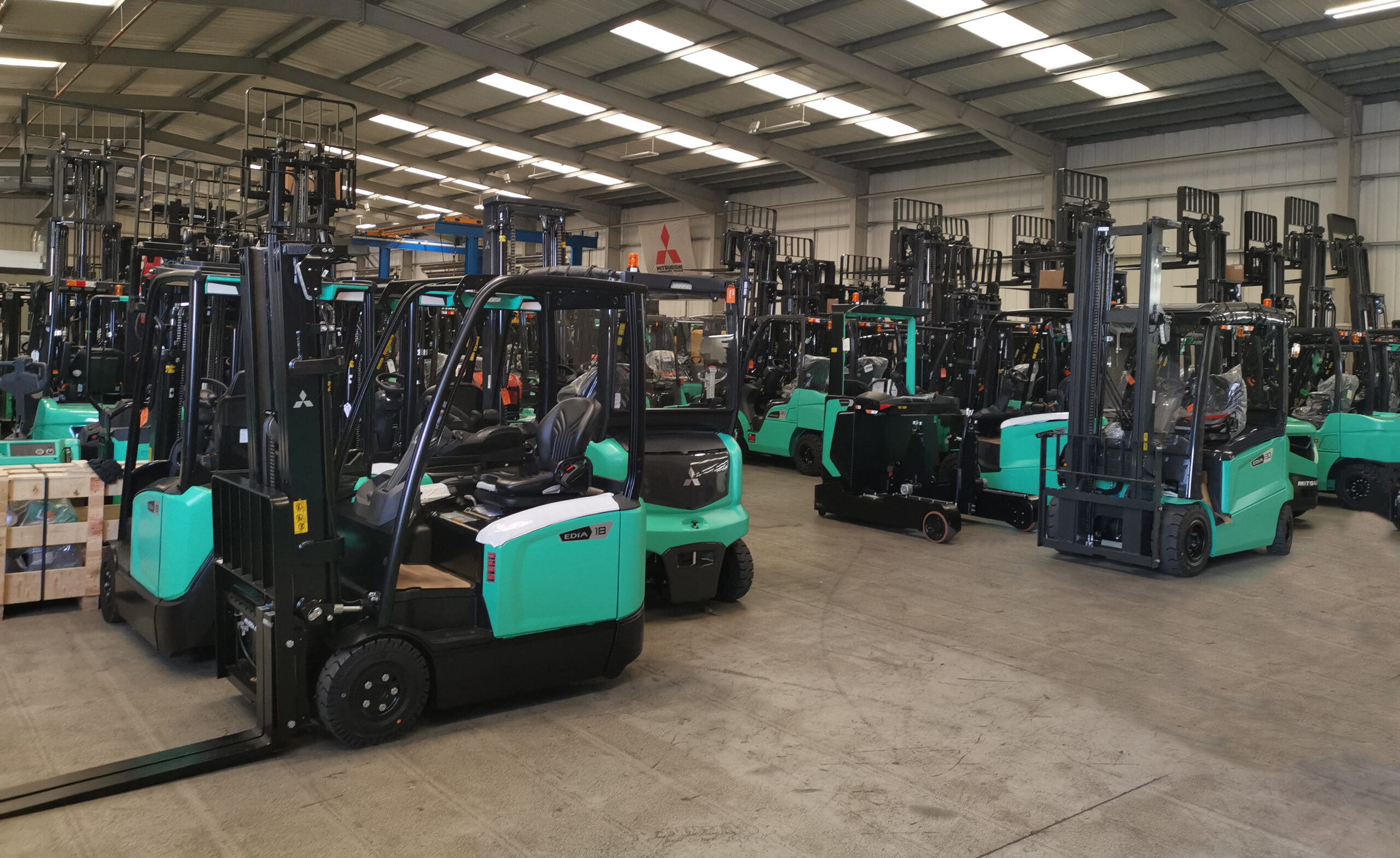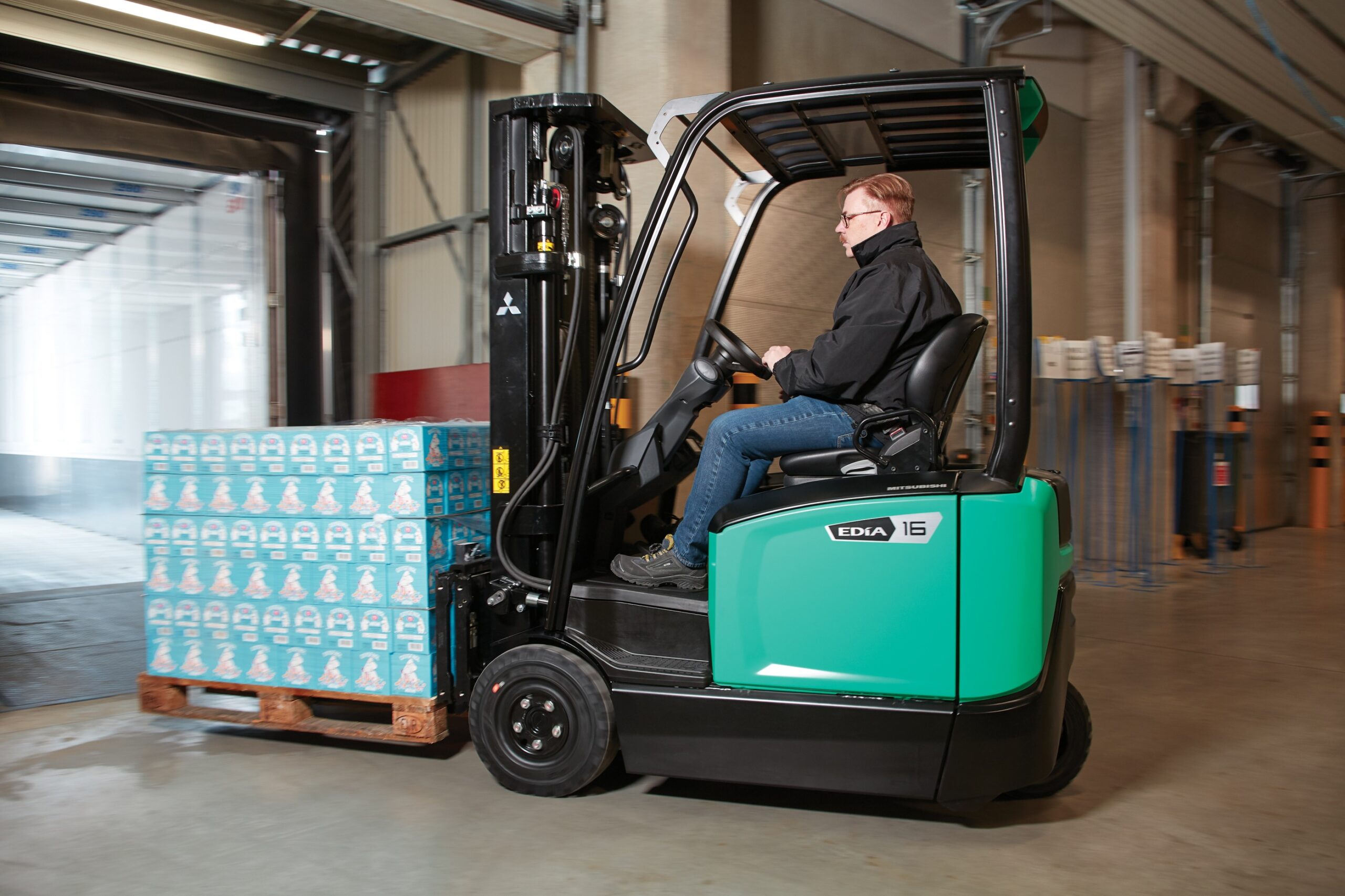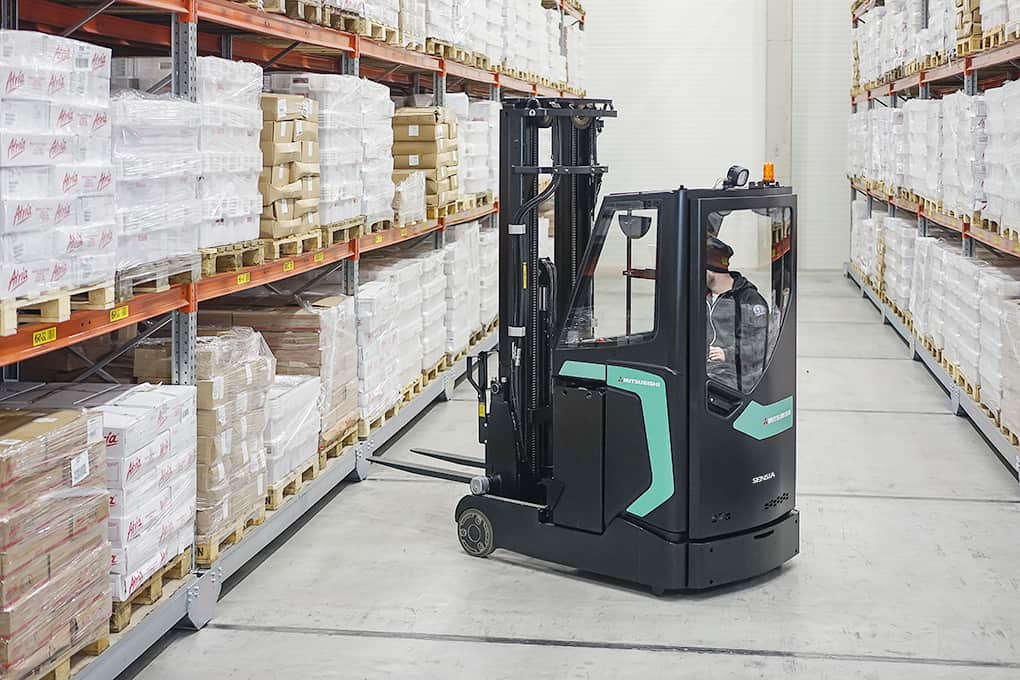Forklift Dimensions: What Size Do You Need?
Selecting the right forklift size is essential for safe and efficient material handling. In addition, forklift dimensions impact manoeuvrability, load capacity, and compatibility with workspace layouts.
Understanding the factors that influence the choice of forklift sizes is crucial to optimise safety and productivity in various operational settings.
Introduction to forklift dimensions and their importance
Role of forklifts in material handling
Forklifts play a vital role in the world of material handling. They’re the workhorses that connect operations across warehouses, manufacturing plants, and logistics hubs. These versatile machines lift, transport, and stack heavy loads with precision and efficiency. Forklifts are like the agile choreographers of a busy dance floor, navigating tight spaces to optimise storage capacity.
By replacing manual labour, they not only boost productivity but also enhance safety, reducing the risk of injuries and minimising product damage. Forklifts are indispensable tools in modern material handling, enabling businesses across various industries to work smarter and more efficiently.
Why correct forklift size matters
Selecting the appropriate forklift size carries significant importance for various reasons. Firstly, it promotes workplace safety by reducing the risk of accidents and injuries that can occur when using incorrectly sized forklift trucks. Secondly, it enhances operational efficiency and productivity, as a well-fitted forklift can efficiently handle loads, minimising downtime and associated costs.
Furthermore, choosing the right-sized forklift extends its longevity, resulting in lower maintenance expenses and reduced downtime due to repairs. Lastly, it aids in compliance with regulatory standards, mitigating potential legal complications. The correct forklift size is pivotal for ensuring safety, operational efficiency, cost-effectiveness, and adherence to industry regulations in material handling operations.
Determining the right forklift size: 3 key considerations
Capacity
When it comes to selecting the right forklift size, one key factor takes centre stage: forklift capacity. It’s all about matching the lifting power of the forklift with the demands of your workload. An undersized forklift truck can struggle when faced with heavy loads jeopardising safety and efficiency. Conversely, opting for an overpowered forklift can lead to wastefulness, additional costs and difficulties when handling smaller tasks.
To establish the ideal forklift capacity, consider the heaviest loads your forklift will routinely tackle and account for any potential future requirements. This alignment of capacity with operational demands is pivotal for safe, efficient, and cost-effective material handling, sidestepping issues like overloading or underutilisation that can hamper productivity and compromise workplace safety.
Manoeuvrability
You should also consider manoeuvrability. It’s all about assessing your workspace layout and how well the forklift can navigate within it. A forklift that’s too large may struggle in confined areas, potentially causing damage and hampering productivity. Conversely, an overly compact forklift may fall short when it comes to handling larger loads, working on poorer floor surfaces or covering greater distances.
To ensure an ideal match, thoroughly examine your workspace, taking into account aisle widths, turning capabilities, and any potential obstacles. Prioritising manoeuvrability not only streamlines material handling but also reduces accident risks, ultimately enhancing overall workplace efficiency. Ideally ask your provider to survey the site and recommend the correct machine for the task.
Forklift dimensions
When it comes to determining the right forklift size, closely examining its dimensions is pivotal. The physical characteristics of a forklift truck, encompassing its height, width, and length, should harmonise seamlessly with the layout and operational needs of your workspace.
If the forklift is excessively large, it might struggle to navigate through narrow aisles and confined spaces, potentially resulting in accidents and operational inefficiencies. Conversely, opting for a smaller forklift could jeopardise stability, especially when handling hefty loads or when extended forks are necessary for specific tasks.
To ensure a perfect fit, conduct a thorough evaluation of workspace dimensions, including ceiling height, aisle widths, and storage rack sizes. This alignment between forklift dimensions and workspace layout is instrumental in enhancing safety, efficiency, and overall operational performance.
Common forklift types and their sizes
Counterbalance forklifts
Counterbalance forklifts, a widely used and adaptable type, are available in various sizes tailored to specific needs. These forklifts feature a counterbalance at the rear, eliminating the need for extended front legs.
Small counterbalance forklifts, with capacities of up to 2000kg, excel in compact warehouses and confined spaces. Medium-sized counterparts, ranging from 2500kg to 3500kg, serve well in general material handling tasks. In contrast, large variations exceeding 4000kg tackle heavy-duty loads in industrial settings.
The selection of the right counterbalance forklift size depends on factors such as load weight, aisle dimensions, and manoeuvrability requirements, ensuring optimal performance and safety in specific work environments.
Reach trucks
Reach truck forklifts are designed for high-reaching tasks in narrow aisles, offer various sizes to suit diverse warehouse needs. These forklifts are adaptable to different layouts and load capacities.
Smaller reach trucks, with 1200kg to 1600kg capacities, excel in compact spaces and handle lighter loads. Larger reach trucks typically range between 2000kg and 2500kg and can lift in excess of 12m in height.
Selecting the appropriate-sized reach truck depends on factors like aisle width, load weight, and vertical reach requirements, ensuring safe and efficient operations within confined spaces.
Sideloaders
Sideloaders, a specialised type of forklift designed for managing lengthy or bulky loads, offer a range of sizes to accommodate diverse industrial demands. These forklifts are tailored to specific load capacities.
Smaller sideloaders, with a capacity of 3000kg to 5000kg, are well-suited for compact spaces and lighter materials. Medium-sized sideloaders, typically handling loads between 6000kg and 8000kg, provide versatility for longer loads and moderate weights. On the other hand, larger sideloaders, capable of hoisting loads up to 50000kg, play a pivotal role in heavy-duty industrial settings like lumber yards, steel warehouses and specialist applications.
Choosing the appropriately sized sideloader hinges on load dimensions, weight, and workspace prerequisites, ensuring efficient and secure material handling across various environments.

Telehandlers
Telehandlers, a versatile breed of forklifts, come in a range of sizes tailored to diverse tasks. These forklifts are distinguished by their extendable booms, enabling both vertical and horizontal reach.
Smaller telehandlers, boasting lift capacities of 1400kg to 2000kg, excel in navigating tight spaces and handling lighter loads. Medium-sized counterparts, typically offering capacities between 2500kg to 4000kg, prove versatile in construction and agricultural applications. Meanwhile, the larger telehandlers, capable of hoisting loads exceeding 5000kg, play a crucial role in heavy-duty construction and industrial settings.
Choosing the aptly sized telehandler hinges on reach requirements, load weight, and job site conditions, ensuring efficient and secure material handling in diverse scenarios.
Order pickers
Order pickers, purpose-built for efficient warehouse order fulfilment, come in diverse sizes to suit specific operational demands.
Smaller variants, often with lift capabilities of ground level to second level, cater to lower storage levels and lighter loads, making them ideal for compact facilities. Medium-sized order pickers, with lift heights ranging from 4m to 6m, provide versatility for mid-sized warehousing tasks. In contrast, larger order pickers, reaching heights exceeding 7m, are indispensable for high-rack storage and expansive distribution centres.
The choice of the right-sized order picker hinges on considerations like warehouse layout, required storage height, and load weights, ensuring optimal productivity and safety throughout the order fulfilment process.
Forklift size and safety: Ensuring secure operations
Navigating through aisles and spaces
In the context of forklifts, safety during navigation through aisles and spaces is closely tied to the choice of forklift size. When a forklift is too large for a confined area, it increases the risk of collisions with racks and obstacles, posing dangers to both operators and cargo. On the flip side, a smaller forklift in a spacious environment may lack the necessary stability for lifting heavy loads, potentially leading to accidents.
Optimal forklift sizing, tailored to the workspace dimensions, is essential for safe manoeuvring. This choice not only reduces accident risks but also fosters a safer work environment, preventing costly mishaps and ensuring the well-being of both operators and the goods they handle.
Safeguarding against tip-overs
Ensuring safety against tip-overs is closely tied to the size of the forklift. The dimensions of a forklift, if not appropriate for the task at hand, can compromise its stability during load handling. Oversized forklifts, for instance, may tip due to the excess weight or height of the load they’re carrying, while undersized ones might lack the stability required for heavier loads.
Selecting the right forklift size, tailored to the specific job and load demands, is crucial for preventing tip-overs. This choice maintains the stability triangle, reducing the risk of accidents, injuries, and potential cargo damage. Ultimately, the right-sized forklift acts as a vital safeguard against perilous tip-over incidents, allowing operators to work with confidence.
Adhering to weight limits
Safety hinges on adhering to weight limits, a factor directly influenced by the forklift’s size. Overloading a forklift truck beyond its weight capacity poses grave dangers, including tipping hazards, potential damage to goods, and risks to operators. Conversely, using an oversized forklift for lighter loads can result in instability during lifting and transportation.
By carefully selecting the right-sized forklift that aligns with the workload, you ensure compliance with weight limits, reducing the likelihood of accidents and injuries while also safeguarding the integrity of products and equipment. In essence, the correct forklift size is pivotal in creating a secure and efficient material handling environment.
Conclusion
To sum up, the size and dimensions of a forklift hold significant sway over workplace safety and operational efficiency. The selection of the right-sized forklift, tailored to the unique requirements of the workspace, stands as a pivotal decision. It serves as a bulwark against accidents, tip-overs, and cargo damage. Ensuring optimal sizing allows for smooth navigation within confined spaces, adherence to weight limits, and the critical maintenance of stability during load handling.
Additionally, it contributes to cost savings by reducing maintenance expenditures and facilitates compliance with industry regulations. Ultimately, investing the time and consideration needed to pinpoint the ideal forklift size is a strategic choice that elevates overall safety and operational effectiveness.









